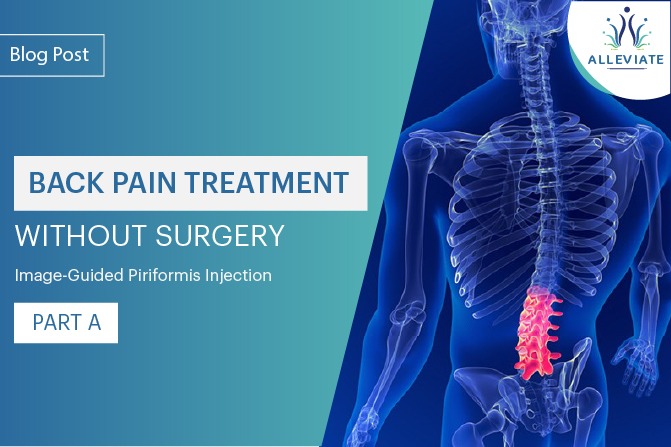Introduction
Welcome to our series on non-surgical treatments for back pain! In this series, we will explore various techniques and success stories that demonstrate the effectiveness of non-invasive approaches to relieve back pain. Today, we begin with Part A, where we deepen our understanding of image-guided piriformis injection.
Understanding Piriformis Syndrome


Back pain can be debilitating, affecting people from all walks of life. One particular cause of back pain is piriformis syndrome, a condition where the piriformis muscle, located deep within the buttocks, becomes irritated or compressed. The piriformis muscle plays a crucial role in hip rotation and stability, and when it becomes inflamed or tense, it can lead to severe pain in the lower back, buttocks, and down the leg.
Indications for Image-Guided Piriformis Injection
Piriformis syndrome can be challenging to diagnose and treat. Traditional methods like rest, physical therapy, and pain medications may provide some relief, but for some patients, these approaches fall short. That’s where image-guided piriformis injection comes into play. This procedure is typically recommended for individuals who:
- Have not found relief through conservative treatments : If you’ve tried rest, physical therapy, and medications without success, an injection may be the next step in managing your pain.
- Experience significant pain : Patients with severe, unmanageable pain in the buttocks, lower back, and down the leg may benefit from this procedure.
- Demonstrate signs of piriformis muscle irritation : An accurate diagnosis is crucial. Image-guided injections help confirm whether the piriformis muscle is the source of your pain.
The Technique of Image-Guided Piriformis Injection
The image-guided piriformis injection is a minimally invasive procedure performed by a trained interventional pain specialist. Here’s an overview of the steps involved:
- Patient Preparation : The patient is positioned comfortably on an examination table, and the skin over the injection site is cleaned and sterilized.
- Imaging Guidance : Fluoroscopy (real-time X-ray) or ultrasound is used to guide the needle to the precise location of the piriformis muscle.
- Needle Placement : A fine needle is inserted through the skin and directed to the piriformis muscle, ensuring pinpoint accuracy.
- Medication Injection : A mixture of a local anesthetic and a corticosteroid is injected into the piriformis muscle. The anesthetic provides immediate pain relief, while the corticosteroid helps reduce inflammation and provide long-term relief.
- Post-Procedure Care : After the injection, the patient is monitored for a brief period and may be advised on post-procedure care, including physical therapy and follow-up appointments.


Needle position on the second image and the classical piriformis dye spread can be appreciated in the first image.
Success Story at Alleviate Pain Clinic, Bengaluru
Let’s take a look at Raju, a 30-year-old techie and weekend cyclist, who had been suffering from piriformis syndrome for over five years. Raju’s pain had progressively worsened, affecting not only his cycling hobby but also his daily life. Despite trying various treatments, he found little to no relief from his persistent back pain.
Raju turned to Alleviate Pain Clinic in Bengaluru, where he met with Dr.Swagatesh Bastia. After a thorough evaluation, Dr. Bastia recommended an image-guided piriformis injection to pinpoint the source of Raju’s pain and provide targeted relief.


Dye spread confirming accurate needle placement in the piriformis muscle under fluoroscopy.The procedure was a success! Raju experienced immediate relief from his pain after the injection, and over the following weeks, his symptoms continued to improve. Dr. Bastia also recommended a tailored physical therapy program to strengthen Raju’s piriformis muscle and prevent future flare-ups.
Raju’s story is just one example of how image-guided piriformis injections, in combination with other non-surgical approaches like physiotherapy, can offer hope and relief to those suffering from chronic back pain.
In the next installment of our series, we will explore more non-surgical treatment options for back pain. Stay tuned for Part B, where we\’ll discuss the benefits of lumbar facet joint injections. Remember, surgery is not always the first or only solution; there are many non-invasive approaches to consider on your journey to a pain-free life



